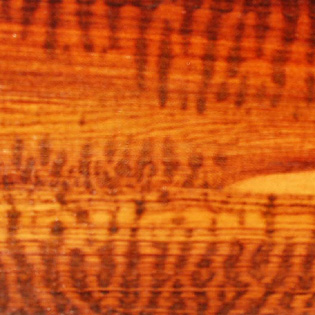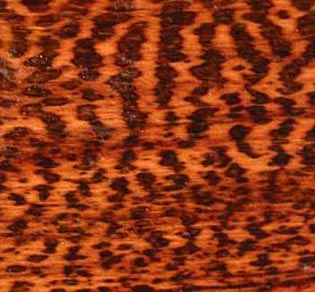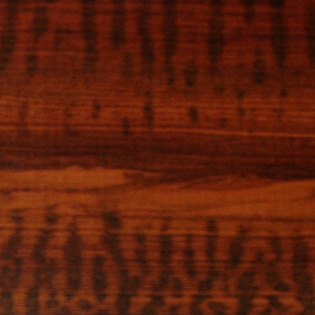 |
 |
 |
more tonewood: Components Woodwind |
Names and distribution: Snakewood (Brosimum guianense, syn. = Piratinera guianense) is closely related to Muirapiranga / Satiné. The appearance of the wood is eponymous: in English, the term "snakewood" predominates, but it also appears the name "letterwood", in German then similar "Schlangenholz" and "Buchstabenholz", in French "amourette" and "Lettre Mouchette". In Brazil, the species is called Muirapinima. The range extends from Para, Brazil to the north up to Venezuela.
Appearance: The wood has a reddish brown ground color; partially colored with almost black radial stripes and snake skin-like zones ("speckled"). Fine and diffuse pores, very decorative if well designed.
Properties: Density at 12% moisture content from 1.20 to 1.38 t / m3. Strongly dwindling, extremely dense and hard. Difficult to dry, strong tendency to crack, plus often interlocked. Planed surfaces shiny and of horny hardness. Difficult to process, but easy to polish. The modulus of elasticity at 12% moisture content is approximately 19,000 N/mm2 and above. Snake wood is extremely hard and resistant to abrasion. The weathering resistance is high, but does not matter because of the limited availability and preferred use as a special wood.
Use: Bows, wood for turnery, special wood for wind instruments.
| Reference objects: |
Fingerboard, AFJ Guitars, Spain |
| References: |
GOTTWALD (1970): Holzbestimmung der wichtigsten Handelshölzer RICHTER (1988): Holz als Rohstoff für den Musikinstrumentenbau |
Note: according to the latest findings, but without any warranty





